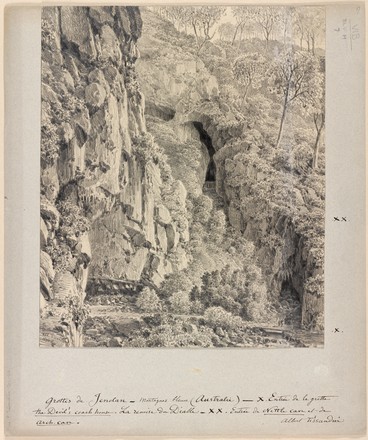
The Devil's Coach House, Jenolan Caves
1894
V1B / Blu M / 7
Pencil on paper
V1B / Blu M / 7
Pencil on paper
The Parisian architect, aviator, editor and illustrator Albert Tissandier (1839-1906) completed this beautiful drawing in 1894 as part of his around the world archaeological studies. At the time Tissandier was in Australia, the Jenolan Caves was an established tourist destination. Their unique structure and natural beauty composed of pure underground rivers and amazing limestone crystal formations fascinated travellers and scientists.
Spanning over 40 kilometres and are an estimated 340 million years old, the Caves are the largest and oldest open cave system in the world. It is traditionally a sacred site of the Burra Burra people, a clan of the Gundungurra nation who inhabited the area of the Greater Blue Mountains. The Indigenous people named the Caves Binoomea or “Dark Places” and used the water ways to bathe. People from various tribes would travel long distances to bathe in the pools located in the Devil’s Coach House which were believed to have special healing powers.
The Devil’s Coach House is the imposing natural archway measuring up to 57 metres high that leads into the mountainside. It was named after a horrific vision experienced by a novice camper, Luke White. White claimed that whilst he was stationed outside the archway, that he saw the devil charging through the entrance aboard a horse-drawn coach.*
Footnotes
http://www.360cities.net/image/devils-coach-house-jenolan-caves#152.20,-12.00,70.0


 Back to list
Back to list